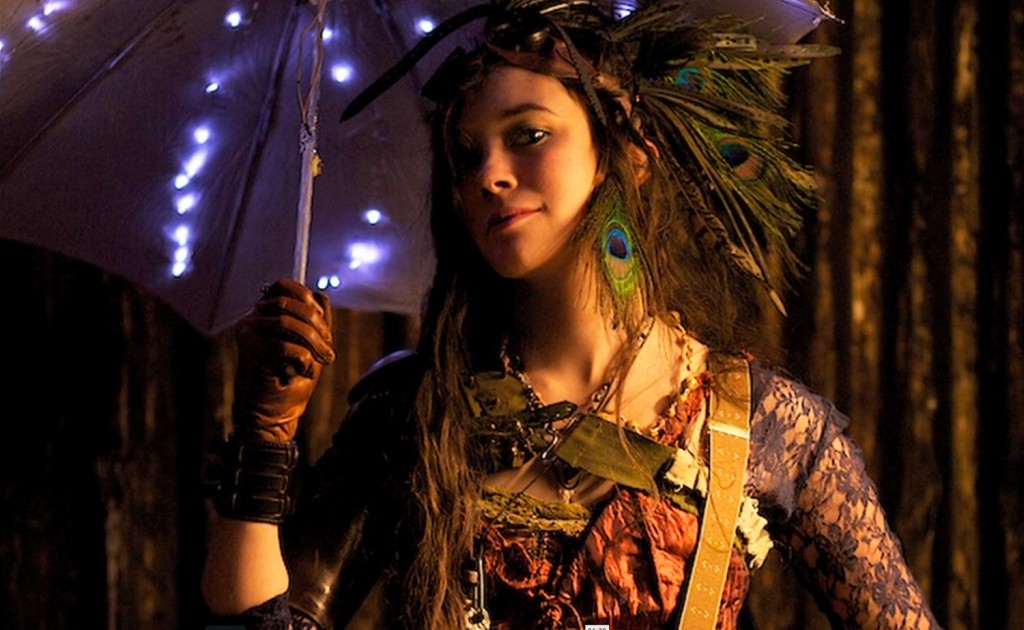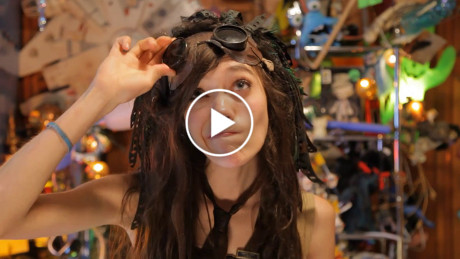 Zina Nicole Lahr was an unbelievably creative girl,that loved to crete staff from junk or old things that noone used anymore.All these thanks to her Creative Compulsive Disorder.
Zina Nicole Lahr was an unbelievably creative girl,that loved to crete staff from junk or old things that noone used anymore.All these thanks to her Creative Compulsive Disorder.
On November 20, 2013 Zina passed away due to a hiking accident in Ouray, CO. After the funeral one of her friends used a footage from a portfolio,so everyone could see her personality and interests.
What is Creative Compulsive Disorder?
Diagnostic Features
The essential features of Creative-Compulsive Disorder are recurrent obsessions or compulsions to Create just about anything, severe enough to be time consuming (i.e.,they take more than 1 hour a day) or cause marked distress or significant impairment when they can not be carried out to satisfaction. At some point during the course of the disorder, the person has recognized that the compulsions are excessive or unreasonable, but can not be stopped.
Compulsions are repetitive behaviors (e.g., painting, knitting, baking, photography, sewing, drawing, printmaking, writing) or mental acts (e.g., planning, daydreaming, thinking of new projects) the goal of which is to prevent or reduce anxiety or stress and provide pleasure or gratification. In most cases, the person feels driven to perform the compulsion to prevent or postpone some dreaded event or situation (e.g., dishwashing, clothes washing, sweeping, personal hygiene, gainful employment).
Prevalence
Community studies have estimated a life time prevalence of 45% in adults. However, methodological problems with the assessment tool used raise the possibility that the true prevalence rates are much higher. In most cases the persons with Creative-Compulsive Disorder tend to aggregate in clusters disguised as knitting circles, craft groups, critic groups, or art school.
Course
Creative-Compulsive Disorder often begins in childhood, showing a dark and twisted spike in teen years. In the majority of adults there is an exacerbation of symptoms related to life changing events such as marriage, a new residence, and the birth of children. About 35% show progressive deterioration in occupational and social functioning. About 1% have an episodic course with minimal or no symptoms between episodes.
Diagnostic criteria for Creative-Compulsive Disorder
A. Either Obsessions or compulsions:
Obsessions as defined by (1), (2), (3) and (4):
(1) recurrent and persistent creative thoughts, impulses or images that are experienced that must be written down, sketched out, or in the most severe cases brought to fruition to prevent marked anxiety or distress from occurring
(2) the thoughts, impulses, or images are not satisfied by remaining simple fleeting fantasies but must have at least some material beginning, though completions is often not achieved. .
(3) attempts to ignore or suppress such thoughts, impulses or images are futile.
(4) The person recognizes that there are not enough hours in a life time to complete all obsessive thoughts, impulses or images but supplies must be purchased anyway.
Compulsions as defined by (1) and (2):
(1) repetitive behaviors (e.g., painting, knitting, baking, photography, sewing, drawing, printmaking, writing) or mental acts (e.g., planning, daydreaming, thinking of new projects) that the person feels driven to perform in response to an obsession, are carried out regardless of realistic time constraints, hours in a day, or in extreme cases needs of family members.
(2) the behaviors or mental acts are aimed at preventing or reducing some dreaded event or situation (e.g., dishwashing, clothes washing, sweeping, personal hygiene, gainful employment); however, these behaviors or mental acts either are not connected in a realistic way with what they are designed to neutralize or prevent or are clearly excessive.
B. The person has experienced Nocturnal Creations, being aroused from a deep sleep with a seemingly brilliant idea that must be written down, sketched, or in the most severe cases brought to fruition.
C. Number of thoughts, impulses or images is extremely disproportionate to projects completed.
D. At some point during the course of the disorder, the person has recognized that the obsessions or compulsions are excessive or unreasonable, but has no desire to stop.
Source : Stormy Pyatte , Creative Compulsive









